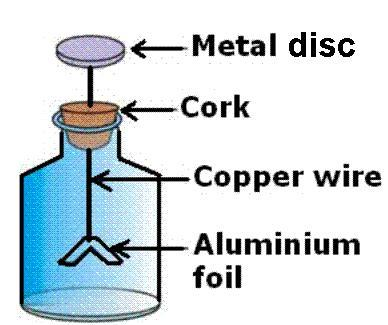Notes to a video lecture on http://www.unizor.com
Electric Charge Unit - Coulomb
Since electrons are the carriers of electricity, we can measure the amount of negative electricity in any object as the number of excess electrons in it, that is the number of electrons that do not have a proton to pair with.
In case of deficiency of electrons, we can measure the amount of positive electricity in any object as the number of excess protons, that is the number of protons that do not have an electron to pair with.
The problem with this way of measuring the amount of electricity is that this unit (amount of electricity in one electron or one proton) is very small and inconvenient for practical matters.
For this reason physicists use a larger unit of electric charge - coulomb, abbreviated as C.
In this unit of measurement (and this is the contemporary definition of this unit) the electric charge of an electron, used as negative value, or of a proton, used as positive value, is
e=1.602176634·10−19C
Therefore, 1 Coulomb is approximately equal to the amount of electricity in
The word "approximately" is used because the above quantity must be an integer (since we are talking about the number of electrons), which it is not. So, the true definition of a coulomb is as stated above.
Historically, coulomb was defined differently. When electrons are moving along some conductive material, they form an electric current, which physicists have measured in amperes - units of electric current, which they have defined separately, using electromagnetic properties of a current. Knowing the electric current, they have defined 1 coulomb of electric charge as an amount of electricity, transferred by an electric current of 1 ampere during 1 second.
This different, more complicated approach to define coulomb was recently changed to a simpler one described above.
To have an understanding of the amount of electric charge of
If each electron has a charge of 1.602176634·10−19C, as is defined above, we can calculate the total electric charge of all electrons in a cubic millimeter of iron:
2.2·1.6·1021−19C ≅ 3.5·102
So, in one cubic millimeter of electrically neutral iron we have about 350C of negative electric charge in all its electrons and 350C of positive electric charge in all its protons. Their mutual attraction hold the structure of the atoms inside. There is no excess nor deficiency of electrons, which makes the whole object electrically neutral.
Coulomb is a large unit. Getting back to an experiment with two pieces of iron presented in the previous lecture, let's reduce the size of pieces to a cubic millimeter, position them at a distance of 100 meters and magically transform all electrons from one piece to another. Then the charge of one piece will be positive +350C and the charge of another will be negative −350C.
Under these conditions the attraction force between them will be about 1.1·1011N (newtons), which is huge and is about twice the weight of a great pyramid of Giza.
As another example, the amount of electricity passing through a regular incandescent lamp of 60W is about 0.5C per second.
We present these examples without any proof, just for demonstration of the concept of amount of electricity. In the future lectures we will learn the laws of electricity and all these calculations will be presented in details.


